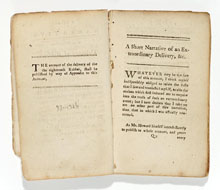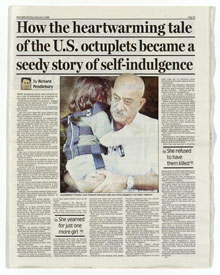Extraordinary Births

This broadside ballad, c.1620, tells the story of a woman who gave birth to 365 tiny babies after being cursed by a beggar she had insulted. From The Lamenting Lady, Pepys Library, Magdalene College, I 44-5
Though a whole country may rejoice at the arrival of a royal heir, most newborn babies matter to only a few. Yet some births in ordinary families have been widely publicized as either miracles or portents of disaster. Sensational and spectacular, they have made news. Illustrated broadsides and prodigy books collected and classified strange nativities as natural, demonic, or, like the Virgin birth, divine. Today, with the disenchantment of the natural world and the rise of the science of monstrosity (teratology), everything may seem to have changed. But extraordinary births still sell papers and moral lessons continue to be drawn. Science has had a hand in many of the most amazing stories. Louise Brown, the first test-tube baby, was hailed as a miracle in 1978. In 2009, an unmarried, unemployed Californian sparked an international media outcry by giving birth to octuplets after fertility treatment: The Times wrote of a ‘nature-defying brood’.
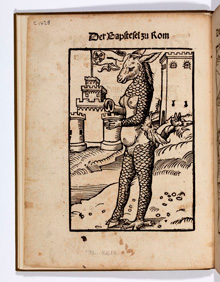
In the influential Protestant pamphlet Deuttung der Czwo Grewlichen Figuren... (1523), Philipp Melanchthon explained that the ‘Pope-ass’, a monstrous being reportedly found dead in the Tiber in 1496, referred to the multiple and monstrous corruptions of the Roman papacy. F152.d.1.30, Aiv
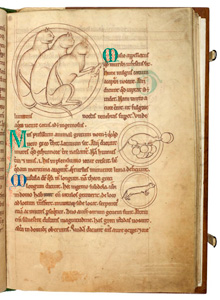
An early thirteenth-century illustrated English bestiary that contains moralized descriptions of animals accompanied by their portraits. The weasel (mustela) is shown on the right below the cat and the mouse. The text remarks: ‘Some say that weasels conceive through the ear and give birth through the mouth’. MS Ii.4.26, f. 28r
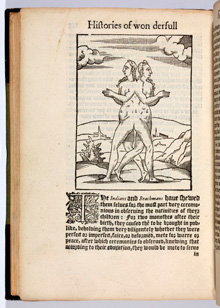
Pierre Boaistuau’s Certaine Secrete Wonders of Nature (1569) contains a collection of extraordinary stories of monstrous births, demons, sea-monsters, serpents, creatures half-man and half-animal, precious stones, floods, comets, earthquakes and other natural phenomena. Syn.7.56.32, p. 123
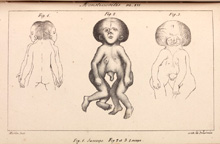
In his Histoire Générale et Particulière des Anomalies de l’Organisation (1832-7), Geoffroy Saint-Hilaire tried to establish a natural classification for anomalies in anatomical organisation during embryonic development based on their complexity and severity. XI.4.33, figs 1–3
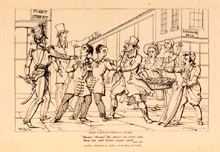
This cartoon, illustrating Edward Lytton’s satirical poem The Siamese Twins (1831), depicts the famous conjoined twins Chang and Eng Bunker being simultaneously arrested for debt and recruited into the armed services. Y.17.29, plate opposite p. 199



